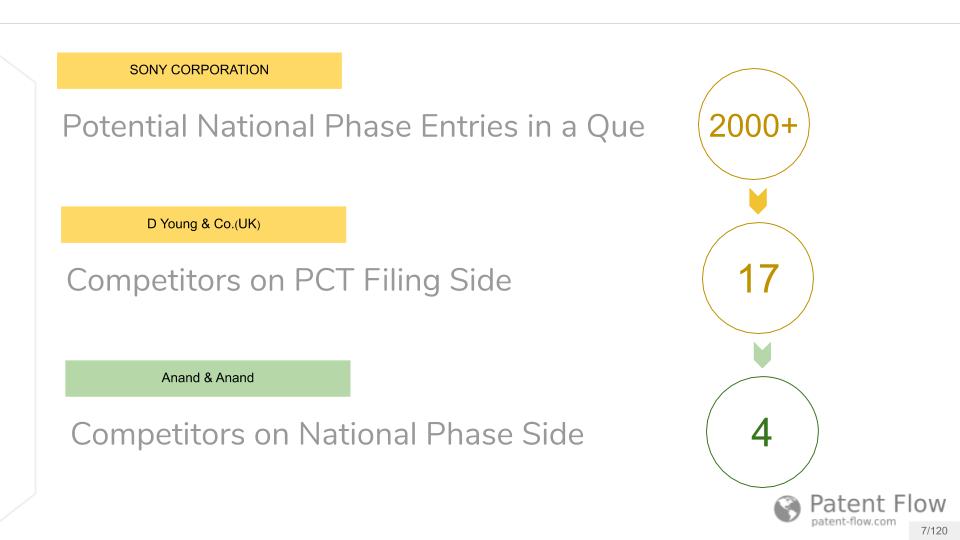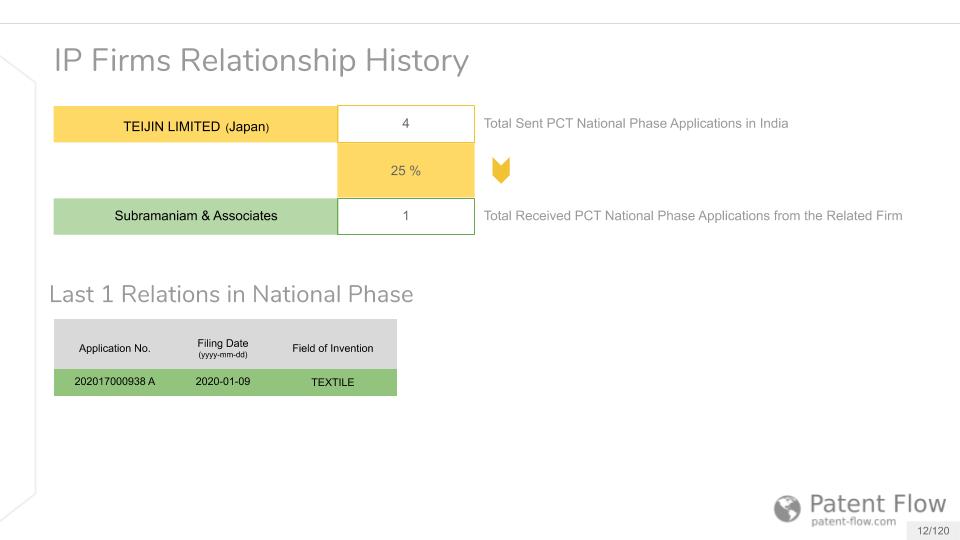‘Patent Flow’ is the only PCT national phase analytical platform for law firms in India which provides up to date filings and exclusive features regarding business development. If your law firm is looking to increase the share of national phase filings, read this. You’ll be assured that data is the key to get most out of your business development efforts.
‘Patent Flow’ is a nearing collection of 4000 work sending IP firms through PCT in India. So, how to target Firms or Applicants which have the highest possibility to be a partner ?
To save time in finding new prospects for PCT National phase filing, we provide subscribers with pre-analysed weekly reports of IP firms and Applicants they can work with.
It’s necessary to understand what makes them a prospect?

It says that “they are prospects because they show change in their recent filing behaviour”. The report is weekly published, and this one has identified 22 Prospect IP Firms, 30 Prospect Applicants and 5 In-house Prospects.
I’ll try to explain a few of them.
National University of Singapore > Marks & Clerk (Singapore)

It means “On 31st Jan. 2020, Indian Patent Office journal published national phase entry of a applicant named ‘National University of Singapore’ which shows change in its filing behaviour as compared to previous filings by the same applicant.”
The change shows that now National University of Singapore has S. Majumdar & Co. as their national phase representative for the first time (not seen in year/s). Such 1 application is present in that journal by the applicant. And not to forget, Marks & Clerk (Singapore) is PCT representative for that application.
Then there is a table with the last 5 applications by National University of Singapore. Importantly, filing and publication dates show they are early publications. Last two entries are by Marks & Clerk (Singapore) and still those entries are gone with 2 different Indian firms (S. Majumdar & Co. & Lexorbis), that too with the same field (Chemical). By this table we can safely assume that either National University of Singapore or Marks & Clerk (Singapore) is distributing filings in India.
These are your prospects!!
At this stage, we don’t know all PCT firms like Marks & Clerk (Singapore) and S. Majumdar & Co. worked for the National University of Singapore. To have a clear understanding of relations among them and competitors, we need to look at related previous filings.
The flow diagram easily helps to visualise the past complex data.

Little more history of National University of Singapore reveals interesting filing behaviour. Relationship between other PCT and National Phase representatives looks straightforward. For example, Amica Law LLC sent all applications to K&S Partners.
Here too, Marks & Clerk (Singapore) show previous relations with Krishna & Saurastri Associates LLP and Khurana & Khurana. So combination of National University of Singapore and Marks & Clerk (Singapore) distributed work to 4 Indian IP Firms, S Majumdar & Co. being the latest among receivers.
How much potential do the National University of Singapore and Marks & Clerk (Singapore) hold ?
Before going to the potential of Marks & Clerk (Singapore), let’s see these numbers below.

This shows the PCT applications made by the applicant later than those that were already entered in India. National University of Singapore might have a que of 82 potential entries in India based on WIPO Gazette. Definitely worth developing a connection with multiple departments and IP cells there in University.
All those 82 applications may enter the national phase in India. 5 PCT and 8 National phase representatives will compete for them. Competition on the National phase side is higher than PCT side firms. This is unusual, so your firm can have a greater chance of winning share just by developing stronger relationships with PCT side IP firms.
Until now we never left National University of Singapore in the above analysis. Yes, S. Majumdar & Co. got the application from applicant and Marks & Clerk (Singapore) is on the PCT side.
But what relation do Marks & Clerk and S. Majumdar & Co. exhibit ?

In recent 94 PCT national phase entries of Marks & Clerk as representative only 2 (17%) are with S. Majumdar & Co.. 1 entry is the latest that we talked about earlier and other dates back to 7th Jan. 2019, almost a year back. There are very less common applications among these two IP firms.
Maybe these IP firms just started to strengthen the bond or has Applicant decided on a national phase side firm name ?
Your firm should target both!
Now you have understood what is being displayed and how to read in between the data. I am sharing two more pairs of prospects, let’s see what you can make out of those.
Hint: Watch out for the country of PCT representatives as well.
Leave your responses at info@disruptiveenergy.net


















